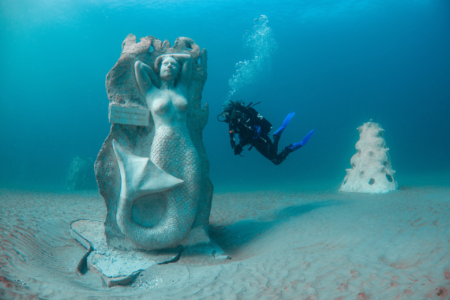
Green Success Stories sat down with Neil Grimmer, Brand President at SOURCE Global, PBC, to learn about his journey to running Source Global, who are dedicated to making, storing, and dispensing clean water.
Who is Neil Grimmer?
Neil Grimmer is an entrepreneur with a rich history of disrupting categories by bringing to market innovative products and human-centered brands.
Currently, Neil is the Brand President for SOURCE Global, PBC, a technology company harnessing the unlimited resources of sunlight and air to produce clean drinking water globally. Prior to his current role, Neil served as the first-ever Brand President for Harley Davidson where he was responsible for all consumer-facing global touchpoints.

For over a decade, Neil solidified his passion for brands with a social purpose when he founded two successful health and wellness companies, Habit and Plum Organics. Both companies share a progressive approach to food innovation and nutrition science with disruptive products that revolutionized their industries. Habit’s unique platform merged technology, personalized nutrition, and science to prove that every individual requires different nutrients for their own optimal well-being.
Neil successfully grew and sold Habit in 2019. As Co-Founder and CEO of Plum Organics, a leading organic kids nutrition company and one of the fastest-growing organic food brands in the U.S., Neil launched over 150+ products, including the award-winning spouted pouch, a format that completely revolutionized a dormant and commoditized category. In 2013, Neil oversaw the acquisition of Plum Organics to food industry icon Campbell Soup Company where he became an executive for over five years.
Neil has received prestigious awards including “Entrepreneur of the Year” for Ernst & Young Northern California; “Most Admired CEO” by the San Francisco Business Times; Bloomberg Businessweek’s Top 5 “America’s Most Promising Social Entrepreneurs”; and “Brand Innovator of the Year” by Brand Packaging magazine. Neil and his work have been featured in The New York Times, The Wall Street Journal, Forbes, The Financial Times, The San Francisco Chronicle, and Fast Company. He is also a fellow at the Aspen Institute and a father of two.
Neil – thanks for being here. Let’s start with a fun question. What would you do with $1 Billion dollars?
We would use $1 billion to advance our mission – perfect water for every person, every place. 2.4 billion people on planet earth don’t have access to safe water, and climate change is making the problem worse. By 2050, six billion people will suffer from clean water scarcity as a result of climate change. That’s a solvable problem and the reason we come to work every day.

Why do you think climate change and sustainability is such an important topic today?
As a society, we’ve spent nearly two decades developing a climate change mitigation ecosystem. All of the necessary elements to deploy at scale from solution providers to financing mechanisms and policy. The beauty of the Inflation Reduction Act is that it opens the door to climate adaptation in underserved communities, along with new tax benefits that can help deliver greater climate resilience for us all.
That creates a massive opportunity for technology companies and solutions focused on helping us face the realities of climate change, and I believe we’ll see sector investment begin to move quickly in this direction.
What do you envision your industry looking like 10 years from now?
I believe the industry, by necessity, will have moved from purely climate change mitigation solutions to those that create climate resilience. But, there is a major problem with how climate change has been framed as a future problem of temperature rise. The reality is that it is actually a “now” problem of shifting weather patterns. When we are talking about multidecade, continent-wide droughts, we’re talking about climate change.
And by 2050, an estimated 6 billion people will suffer from clean?water scarcity?as a result of climate change. So while we’re working to mitigate climate change, the industry will recognize that – as drought statistics affirm – it is already here, and we have to adapt.
What can the average person do to make a difference?
1.Develop a close, personal relationship with the facts. Water – our most essential need – is arguably humanity’s most fundamental problem, and it’s getting ever more pressing. But for many of us, it doesn’t feel like our water supply has changed. We can read headlines about drought, watch wildfires burn, or hear about a neighbor whose well has gone dry. But when the tap runs and the stores are stocked, water looks a lot like someone else’s problem. The issue with drought is that it’s sneaky and insidious. Every dried-up farm or water-scarce town feels far removed. Each season with less rainfall is a neglected crisis until all our drinking water is inside a plastic bottle imported from far away and we realize what’s happened. We need to get very clear: water scarcity is not a someday scenario. It’s now, and it’s happening to you.
2.Start treating water like a precious resource. Because it is. The average American uses 25,300 gallons of water a year (69.3 gallons daily), according to Boston Consulting Group. It’s time to turn off the tap, shorten the shower, and think about if we really want to flush water suitable for drinking down the drain. Those of us with the means should look for low-water-use appliances for our homes. We should use readily available “gray water” systems to recycle household water for plants and shrubs, choose low-water-use landscaping and recognize that water is massively subsidized and that we don’t pay what it truly costs, especially in times of drought.
Neil, thank you for sharing how Source is making, storing, and dispensing clean water.
Learn more about Source and support their goals by visiting their website here.




